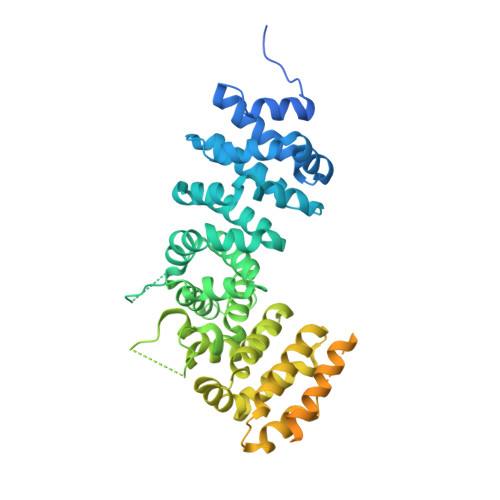Dynamic and static interactions between p120 catenin and E-cadherin regulate the stability of cell-cell adhesion.
Ishiyama, N., Lee, S.H., Liu, S., Li, G.Y., Smith, M.J., Reichardt, L.F., Ikura, M.(2010) Cell 141: 117-128
- PubMed: 20371349
- DOI: https://doi.org/10.1016/j.cell.2010.01.017
- Primary Citation of Related Structures:
3L6X, 3L6Y - PubMed Abstract:
The association of p120 catenin (p120) with the juxtamembrane domain (JMD) of the cadherin cytoplasmic tail is critical for the surface stability of cadherin-catenin cell-cell adhesion complexes. Here, we present the crystal structure of p120 isoform 4A in complex with the JMD core region (JMD(core)) of E-cadherin. The p120 armadillo repeat domain contains modular binding pockets that are complementary to electrostatic and hydrophobic properties of the JMD(core). Single-residue mutations within the JMD(core)-binding site of p120 abolished its interaction with E- and N-cadherins in vitro and in cultured cells. These mutations of p120 enabled us to clearly differentiate between N-cadherin-dependent and -independent steps of neuronal dendritic spine morphogenesis crucial for synapse development. NMR studies revealed that p120 regulates the stability of cadherin-mediated cell-cell adhesion by associating with the majority of the JMD, including residues implicated in clathrin-mediated endocytosis and Hakai-dependent ubiquitination of E-cadherin, through its discrete "dynamic" and "static" binding sites.
- Division of Signaling Biology, Ontario Cancer Institute, ON, Canada.
Organizational Affiliation:

















